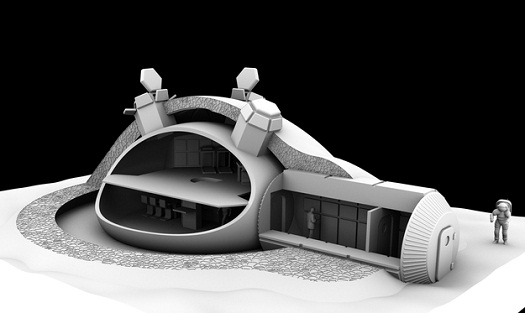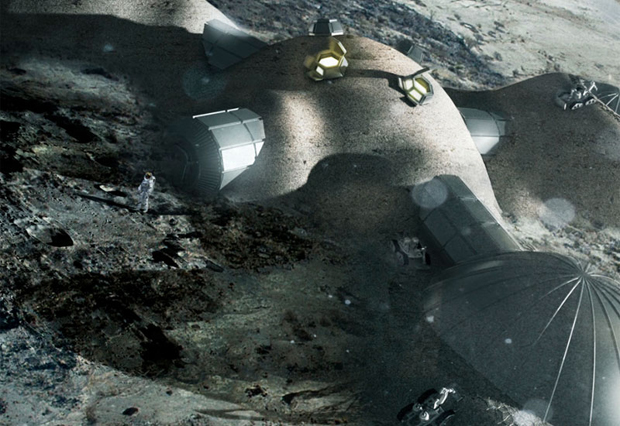
Foster + Partners designs 3D moon base
Global architecture practice uses latest rapid prototyping to imagine a lunar base for European Space Agency
Architects are used to designing buildings to withstand extreme conditions – earthquakes, sub-zero temperatures, gale-force winds. But few flag up meteorites and gamma radiation in the brief. Foster + Partners’ recent feasibility study for a lunar base had to take such a climate into account though clearly the firm took this assignment in its stride.
“As a practice, we are used to designing for extreme climates on Earth and exploiting the environmental benefits of using local, sustainable materials,” says Xavier De Kestelier at Foster + Partners’ Specialist Modelling Group, “Our lunar habitation follows a similar logic.”
The practice was commissioned by the European Space Agency to create a concept for a four-person dwelling on the moon. But how do you get your construction materials and builders up there?
The architects’ solution was to turn to 3-D printing. “Terrestrial 3D printing technology has produced entire structures,” points out Laurent Pambaguian, who is leading the project for ESA. “Our industrial team investigated if it could similarly be employed to build a lunar habitat.”

Scott Hovland of ESA’s human spaceflight team explains the advantages of this approach: “3D printing offers a potential means of facilitating lunar settlement with reduced logistics from Earth. The new possibilities this work opens up can then be considered by international space agencies as part of the current development of a common exploration strategy.”
One part of the base would be taken up there by rocket in a tubular module. Once up there, the module would become the base’s entrance, which would lead into an inflatable dome. Inside the dome, a robot would operate the printer to print a protective layer using locally-sourced lunar soil over the outside of the dome. This would help protect those inside from your usual lunar hazards of space radiation and micrometeoroids.
The company supplying the printer, Monolite, is more au fait with creating sculptures than extra-terrestrial dwellings. But again, it seems unfazed. Company founder Enrico Dini explains the process:
“First, we needed to mix the simulated lunar material with magnesium oxide. This turns it into ‘paper’ we can print with. Then for our structural ‘ink’ we apply a binding salt which converts material to a stone-like solid.”

Monolite’s current printer builds at a rate of around 2m per hour, meaning construction will be quite a slow process. However its next-generation design will be up to 3.5m per hour, so a whole building will be done and (moon) dusted within a week. More innovative invention with a sustainable edge can be found in Vitamin P2. For the lowdown on what more innovative building technologies can help facilitate check out The Phaidon Atlas of 21st Century Architecture.